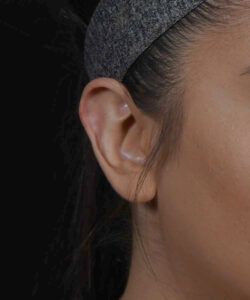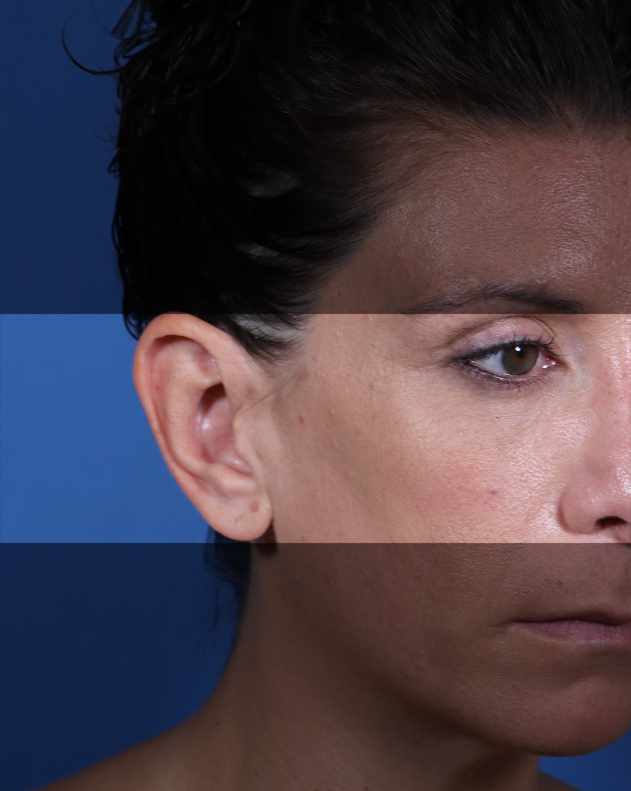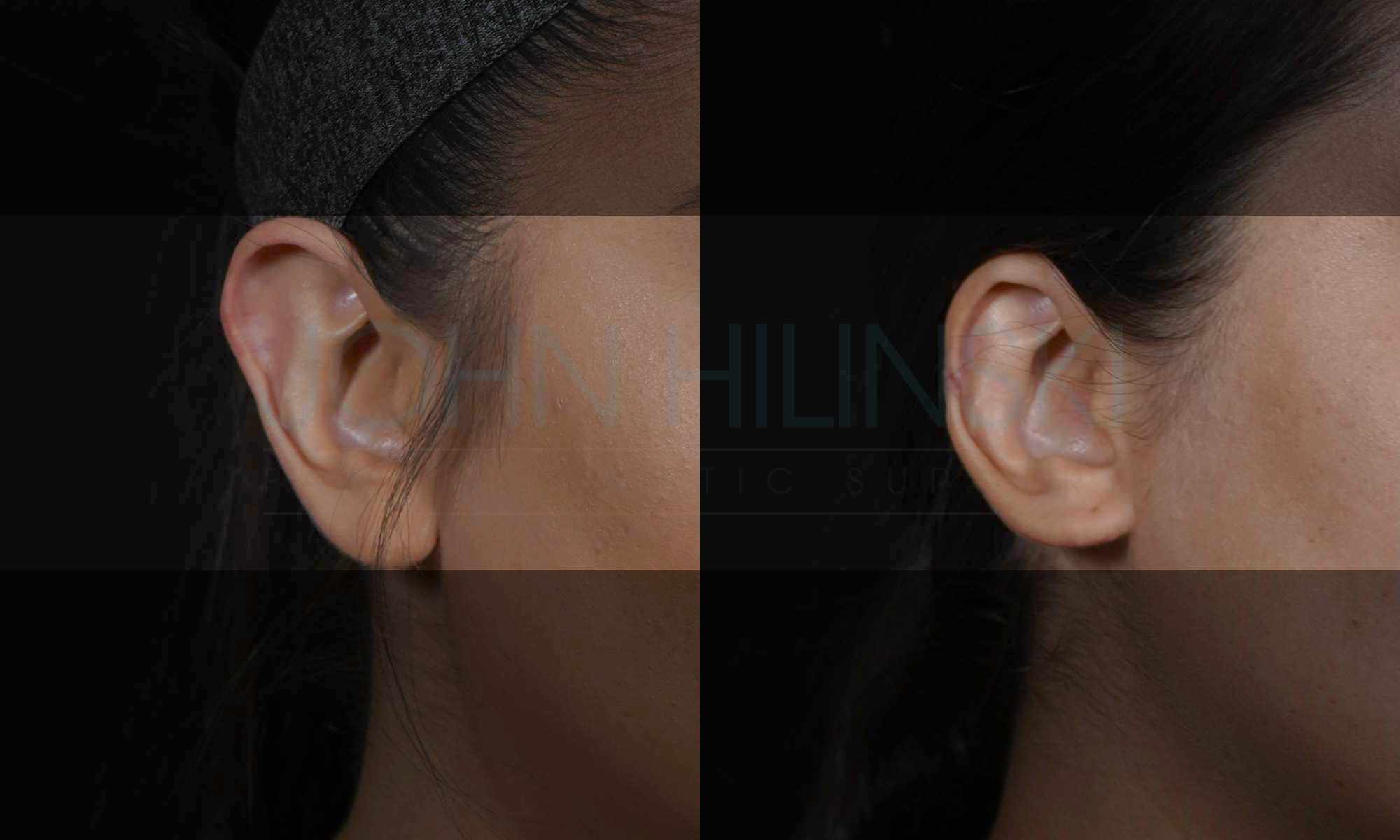 About 25% of the patients who seek out macrotia ear reduction surgery with Dr. Hilinski have a prior history of otoplasty, or ear pinning. Here is an illustrative case example of this.
About 25% of the patients who seek out macrotia ear reduction surgery with Dr. Hilinski have a prior history of otoplasty, or ear pinning. Here is an illustrative case example of this.
This very pleasant young lady underwent otoplasty surgery in Mexico several years ago. Unfortunately, despite the ear pinning procedure, she was still unhappy with the fact that her ears were too prominent for her tastes. That is because otoplasty certainly helps in pinning the entire ear closer to the side of the head. However, pinning the ear back only makes it appear less prominent because it doesn’t stick out as far. Otoplasty doesn’t actually make the ear smaller in size from top to bottom, though. This is precisely why so many patients undergo otoplasty ear pinning – only to continue staring at their ears because they are still too large in size.
Average Ear Size and Proportion
Past studies have shown that the average vertical height of the ear is around 65 millimeters, or 6.5 centimeters, from top to bottom. Of this total height, about 18 millimeters, or 1.8 centimeters, is the earlobe.
But most people won’t take the time and effort to measure their ears when determining if they are too large in size. More often patients will simply get a gestalt feeling when looking at their ears. When an ear is too large for someone’s face or head, you can simply tell by looking at it. You don’t really need to measure it.
 Another way people look at the ears relates to how proportional they are to other facial features. For instance, many people think that the height of the ear should be somewhere between a line drawn from the eyebrows, or upper eyelid, and the bottom of the nose. Now this is not a hard and fast rule that every face needs to follow. It is simply a guideline. Obviously every face is not going to appear the same in terms of these proportions – and many people will have ears that fall outside of these guidelines, yet still look quite normal for them. And vice versa – there are some patients who actually fall within these guidelines (see adjacent photo), yet are still bothered by the size of their ears. The latter tend to be more of the female population in our experience since this segment of the population can tolerate – and desire – a smaller, daintier looking ear.
Another way people look at the ears relates to how proportional they are to other facial features. For instance, many people think that the height of the ear should be somewhere between a line drawn from the eyebrows, or upper eyelid, and the bottom of the nose. Now this is not a hard and fast rule that every face needs to follow. It is simply a guideline. Obviously every face is not going to appear the same in terms of these proportions – and many people will have ears that fall outside of these guidelines, yet still look quite normal for them. And vice versa – there are some patients who actually fall within these guidelines (see adjacent photo), yet are still bothered by the size of their ears. The latter tend to be more of the female population in our experience since this segment of the population can tolerate – and desire – a smaller, daintier looking ear.
Macrotia Reduction After Otoplasty
When looking at the current case example, you can see that she falls into the category of someone who, by gestalt appearance, just has larger looking ears. You don’t even have to measure her ears to realize they are too big for her face. In fact, you can appreciate the size of her ear (and the ‘tall’ shape) without even seeing her whole face in context. And this was the case after having undergone otoplasty surgery by a different plastic surgeon.
Fortunately, she did her homework and discovered Dr. Hilinski and his worldwide reputation for making large ears smaller in size. She also found his two websites that contain a wealth of information regarding ear reduction surgery. Included in these websites are an increasing number of photo examples that show before and after results from patients who had their ears reduced in size by Dr. Hilinski. What the patient also realized in her search for answers was the fact that Dr. Hilinski was one of very few plastic surgeons out there who had any sort of examples at all. That is because so few plastic surgeons have the knowledge and/or experience in creating smaller ears from larger ones.
In this particular instance, Dr. Hilinski recommended she undergo ear reduction that included reducing the top part of the ear in combination with the bottom part. This is actually quite common in our practice with nearly 20% of patients getting the earlobe reduced at the same time as the top of the ear.
The actual results of her ear reduction surgery are shown here below. As anyone can readily see, there has been a beautiful transformation in the size and shape of her ears. The ear is now significantly smaller from top to bottom – by a magnitude of over 1 centimeter at least. This is precisely the type of change in the ear that would never, ever be realized through otoplasty, or ear pinning, surgery.
In addition, she has a better shaped ear in that the top portion is no longer so prominent. The earlobe is also improved in that it does not hang down as much. Collectively, this gives the ear a much better overall appearance. It is also now the proper size for her face. You can still see a bit of healing along the mid portion of the helical rim where an incision was made across the ear. But as more time unfolds, this should continue to get better and become less obvious.

